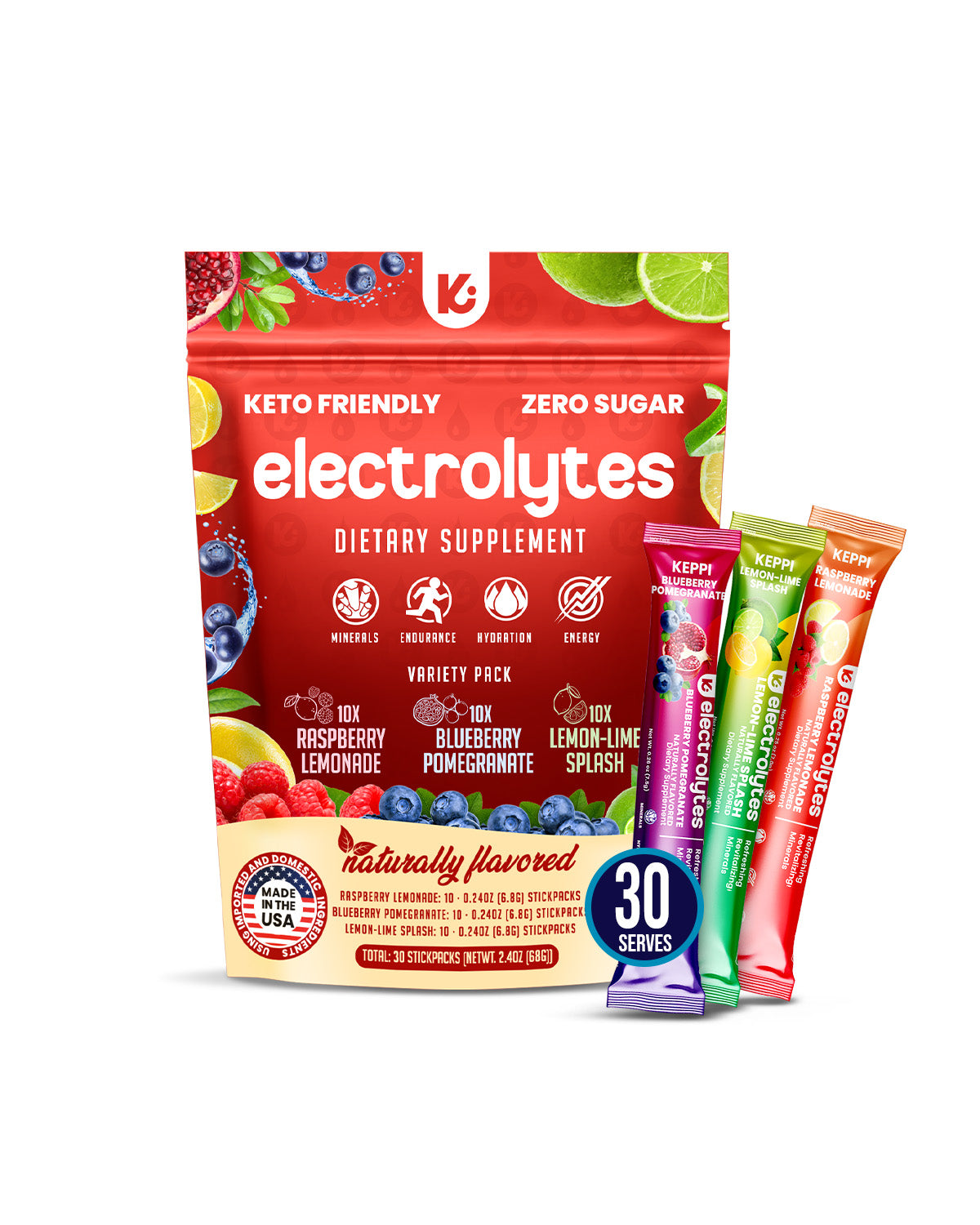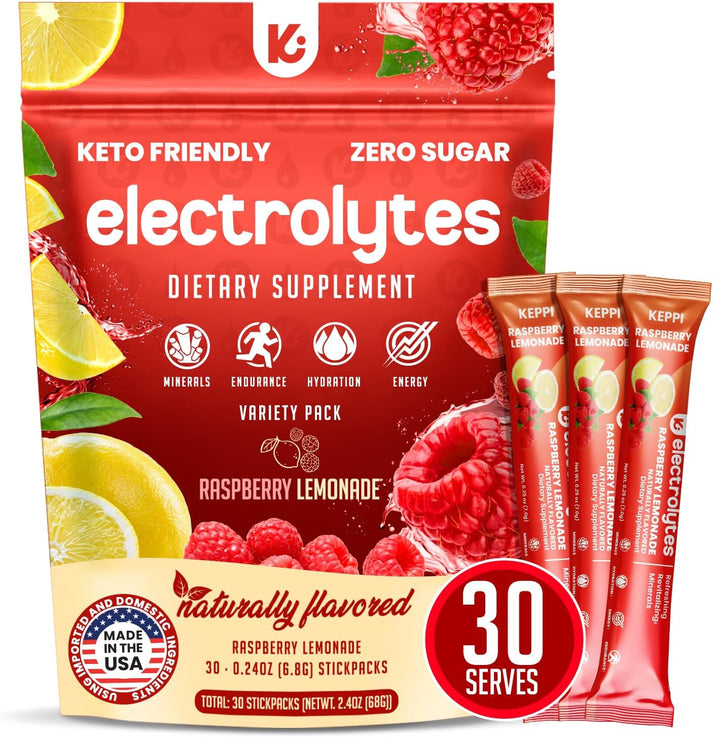Keto Athlete Playbook: Timing Exogenous Ketones, Creatine, Caffeine & Electrolytes
Share
When Should Athletes Use Keto Supplements? Timing Exogenous Ketones, Creatine, Caffeine, BCAAs & Electrolytes
Evidence-based guide for keto athletes: how to time exogenous ketones, creatine, caffeine, BCAAs, and a clean, sugar-free keto electrolyte powder to stay in ketosis and perform.
You’ve hammered interval after interval, felt the familiar fire in your quads—then the energy gauge flat-lines. Keto keeps carbs low for fat-adaptation, but on race day you still need fast, reliable fuel and robust hydration. The bridge is smart supplement timing: pairing the right tools with the right moments so you protect ketosis and hit peak outputs (Volek & Phinney, 2015; Burke, 2015).
This guide sets a simple framework you can use today. You’ll get context on metabolic shifts in nutritional ketosis, clear cues for pre-workout, mid-session, and recovery dosing, and practical picks—like a keto electrolyte powder / electrolyte drink mix—that fit low-carb training without added sugar.
What you'll learn
- Metabolic changes during training in nutritional ketosis (Volek & Phinney, 2015).
- How depleted glycogen and session demands signal supplement timing (Burke, 2015).
- Windows for exogenous ketones, electrolytes (sodium–potassium–magnesium–calcium), and β-HB drinks (Clarke et al., 2012; Stubbs et al., 2017).
- Where creatine, caffeine, beta-alanine, and BCAAs fit (Kreider et al., 2017; Grgic et al., 2020; Hobson et al., 2012; Jäger et al., 2017).
- Quick checklist linking adaptation stage, workout intensity, climate, and recovery goals (ACSM, 2007; IOM, 2004).
TL;DR — Should athletes use keto supplements?
Keto athletes benefit most when timing matches the work: exogenous ketones help sustain steady endurance, creatine boosts repeated sprints/power, caffeine sharpens focus, BCAAs can support long fasted sessions, and sugar-free electrolytes prevent keto “flu” and cramping by replacing sodium, potassium, magnesium and calcium (ACSM, 2007; Clarke et al., 2012; Kreider et al., 2017; Grgic et al., 2020; Phinney et al., 1983).
Learn more about Keppi Keto Electrolyte PowderKey education topics
- Exogenous Ketone Esters — rapid, short-term β-hydroxybutyrate rise for endurance blocks (Clarke et al., 2012; Cox et al., 2016).
- Creatine Monohydrate — strength/power support during low glycogen (Kreider et al., 2017).
- Caffeine — focus and perceived exertion benefits (Grgic et al., 2020).
- BCAAs — pragmatic use in long fasted work; evidence mixed (Jäger et al., 2017).
- Electrolyte blends — sodium, potassium, magnesium, calcium for keto-friendly hydration (Phinney et al., 1983; IOM, 2004; ACSM, 2007).
Exogenous ketone esters: when and why
Ketone esters quickly lift blood β-hydroxybutyrate (β-HB), typically within minutes, and can maintain elevated levels for 2–3 hours (Clarke et al., 2012; Stubbs et al., 2017). They provide an alternative oxidative fuel that may reduce reliance on glycogen in steady endurance. Results on performance are mixed and context-dependent—benefits are more likely in prolonged, sub-threshold efforts and less clear for high-intensity sprints (Cox et al., 2016; Burke, 2020).
- Timing: 30–45 min pre-endurance session; trial in training first (Clarke et al., 2012; Cox et al., 2016).
- Choose esters over salts for higher β-HB without large mineral loads (Stubbs et al., 2017).
- GI tolerance varies; start small and assess.

Creatine monohydrate: power on keto
Creatine saturates phosphocreatine stores, supporting repeated high-power efforts regardless of carbohydrate intake (Kreider et al., 2017). A daily 3–5 g maintains saturation; short loading (≈0.3 g/kg/day for 5–7 days) speeds the process (Kreider et al., 2017). Small body-mass increases from water are common and not harmful.
- Use: 3–5 g/day; optional short loading phase (Kreider et al., 2017).
- Fits: strength blocks, sprint repeats, CrossFit-style sessions under low glycogen.
“Creatine is among the most effective ergogenic aids for increasing high-intensity exercise capacity and lean mass.”
Caffeine: focus without breaking ketosis
Caffeine (≈3 mg/kg) 45–60 min pre-workout can reduce perceived exertion and enhance endurance and strength performance without disrupting ketone levels (Grgic et al., 2020; Spriet, 2014).
- Use: 2–3 mg/kg most days; cycle 1–2 low-caffeine days weekly to limit tolerance (Grgic et al., 2020).
- Cut-off: Avoid after mid-afternoon to protect sleep.
BCAAs: a pragmatic tool
BCAA supplementation can be useful during very long, fasted sessions to support protein intake when whole foods aren’t practical, though overall evidence on soreness/performance is mixed; adequate daily protein remains paramount (Jäger et al., 2017).
- Use: 5–10 g during long fasted efforts if food access is limited (Jäger et al., 2017).
- Choose: sugar-free powders to keep carbs minimal.
Electrolyte blends: the keto essential
Lower insulin on ketogenic diets increases renal sodium loss (“natriuresis of fasting”), which can drive headaches, fatigue and cramps if electrolytes aren’t replaced (Phinney et al., 1983; Hall, 2012). A sugar-free electrolyte powder with sodium, potassium, magnesium and calcium helps maintain plasma volume, nerve conduction and muscle contraction (IOM, 2004; ACSM, 2007; Volpe, 2013; Weaver et al., 2013).
- Everyday baseline: 1–2 servings/day in water; increase in heat/humidity or high-sweat blocks (ACSM, 2007).
- Workout use: target ~300–700 mg sodium/serving and adjust by sweat rate; include potassium, magnesium, calcium for full profile (IOM, 2004; ACSM, 2007).
- Forms: citrate salts dissolve well and are GI-friendly (Walker et al., 2003).
Solution: time-targeted keto support across the week
Pair your training phase with the right stack and keep carbs minimal using a clean electrolyte powder / hydration packets that are sugar-free and travel-ready.
Implementation steps
- Pre-workout (endurance): electrolyte stick + ketone ester (trial dose) + 2–3 mg/kg caffeine, ~30–45 min pre (Clarke et al., 2012; Grgic et al., 2020).
- Intra-session: sip 150–250 ml every 15–20 min; add a second electrolyte serving in heat (ACSM, 2007).
- Strength/power days: 3–5 g creatine daily; beta-alanine 3–6 g/day for ≥4 weeks if HIIT focus (Kreider et al., 2017; Hobson et al., 2012).
- Recovery: replace ~150% of fluid lost over 2–4 h with electrolyte water; prioritise protein and total calories (ACSM, 2007; Jäger et al., 2017).
Keppi Keto Electrolyte Powder: daily hydration for keto athletes

Keppi Keto Electrolyte Powder
All-in-one, sugar-free electrolytes for keto athletes. Balanced sodium, potassium, magnesium and calcium in fast-dissolving, clean-label stick packs—ideal for travel, training and daily hydration.
How a clean electrolyte powder strengthens your strategy
- Fast-mixing, zero-sugar formula keeps glucose flat and supports ketosis (Phinney et al., 1983; Hall, 2012).
- Science-driven electrolyte ratio supports fluid balance, nerve signalling and muscle contraction (IOM, 2004; ACSM, 2007; Volpe, 2013).
- Pocket-friendly hydration packets make consistent intake easy on race day and travel.
Conclusion
The sweet spot for keto athletes is timing. Use exogenous ketones for steady endurance windows; anchor power phases with creatine; sharpen with caffeine; deploy BCAAs when whole-food protein isn’t practical; and cover the base layer with sugar-free electrolytes to offset keto-related sodium loss. Personalise by session length, intensity and heat, and you’ll perform—and recover—better without abandoning ketosis (ACSM, 2007; Clarke et al., 2012; Kreider et al., 2017).
References
- American College of Sports Medicine (2007) ‘Exercise and fluid replacement’, Med Sci Sports Exerc, 39(2), 377–390.
- Burke, L.M. (2015) ‘Re-examining high-fat diets for sports performance: did we call the “nail in the coffin” too soon?’, Sports Med, 45(S1), 33–49.
- Burke, L.M. (2020) ‘Ketogenic low-carbohydrate diets for endurance: evidence, context, and caveats’, J Physiol, 598(4), 753–755.
- Clarke, K. et al. (2012) ‘Kinetics, safety and tolerability of (R)-3-hydroxybutyl (R)-3-hydroxybutyrate in healthy adults’, Regul Toxicol Pharmacol, 63(3), 401–408.
- Cox, P.J. et al. (2016) ‘Nutritional ketosis alters fuel preference and diminishes glycogen utilization in exercising humans’, Cell Metab, 24(2), 256–268.
- Grgic, J. et al. (2020) ‘Caffeine ingestion enhances muscular strength and endurance: a meta-analysis’, Sports Med, 50(11), 1–19.
- Hall, J.E. (2012) ‘The kidney, sodium and blood pressure—role of insulin in sodium retention’, Compr Physiol, 2(4), 2141–2153.
- Hobson, R.M. et al. (2012) ‘Effects of β-alanine supplementation on exercise performance: a meta-analysis’, Amino Acids, 43(1), 25–37.
- Institute of Medicine (2004) Dietary Reference Intakes: Water, Potassium, Sodium, Chloride, and Sulfate. Washington, DC: National Academies Press.
- Jäger, R. et al. (2017) ‘International Society of Sports Nutrition position stand: protein and exercise’, J Int Soc Sports Nutr, 14, 20.
- Kreider, R.B. et al. (2017) ‘ISSN position stand: safety and efficacy of creatine supplementation’, J Int Soc Sports Nutr, 14, 18.
- Phinney, S.D. et al. (1983) ‘The human metabolic response to chronic ketosis without caloric restriction: preservation of submaximal exercise capability’, Metabolism, 32(8), 769–776.
- Spriet, L.L. (2014) ‘Exercise and sport performance with low doses of caffeine’, Sports Med, 44(Suppl 2), S175–S184.
- Stubbs, B.J. et al. (2017) ‘On the metabolism of exogenous ketones in humans’, Front Physiol, 8, 848.
- Volpe, S.L. (2013) ‘Magnesium in disease prevention and overall health’, Adv Nutr, 4(3), 378S–383S.
- Volek, J.S. & Phinney, S.D. (2015) The Art and Science of Low Carbohydrate Performance. Beyond Obesity LLC.
- Weaver, C.M. et al. (2013) ‘Potassium and health’, Adv Nutr, 4(3), 368S–377S.
- Walker, A.F. et al. (2003) ‘Bioavailability of magnesium salts’, J Am Coll Nutr, 22(2), 170–176.
